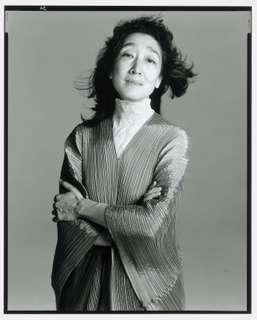|
Back
The Nobility of Elegance New York
Avery Fisher Hall
04/15/2009 - April 16, 17, 18*, 2009
Maurice Ravel: Piano Concerto in G Major
Franz Schubert: Symphony in C Major, D. 944 (“The Great”)
Mitsuko Uchida (Piano)
New York Philharmonic Orchestra, Riccardo Muti (Conductor)

Mitsuko Uchida (© Richard Avedon)
I didn’t think it possible to transform the memories of the majesty and reverence of Jonathan Miller’s St. Matthew Passion to the mirthful romping music of Ravel’s Piano Concerto in only 24 hours. But if anyone could accomplish this, the team of Riccardo Muti and Mitsuko Uchida were the ones. Ms. Uchida has never done anything wrong. But putting together the gossamer essence of her Mozart with her innate architecture of Schoenberg with her color in Webern, one inevitably finds her more perfectly correct than ever.
Under her titanic hands, the Concerto sounded like the easiest music in the world. She sailed through the first-movement with just the right dosage of jazz, pluck and whizzing fingerwork. The second movement was played the only way possible: it was simple, elegant, noble and spun out like a vocal line. The last-movement toccata was played with breathtaking virtuosity. At the end we felt like kids at a magic show. Not asking how she did it, but how wonderful the world is that such magic can be performed at all.
Of course Mr. Muti was the ideal servant here, for he can make the New York Philharmonic into an artist’s studio of hues and shadows. I’ve rarely heard the horns bark so convincingly, or the Phil winds wind up and down the scale so gracefully in the first movement. The combination was less a serious concerto than a perfect meringue-soufflé, whipped into shape, placed on the most elegant Wedgewood and consumed with joy.
Mr. Muti took the Schubert Ninth Symphony with no idiosyncrasies (save for unique extra retardation in the slow movement). He makes the Phil sound so terrific that he needs no special commands. The work was taken at a “heavenly pace”, and the perfectionist Mr. Muti made certain that the majestic trombones in the climax closed the work with all the majesty this great work deserves.
CODA: After the Ravel, I recalled a strange meeting I had several years ago with the Board of Trustees of an international music festival in Asia, where I was the pro bono consultant. The Board—some very very rich people—were upset since their guest pianist had suggested playing the Ravel Concerto For Left Hand with the local orchestra.
“This piece”, they asked, “is written for only one hand. Didn’t the writer write something with two hands and orchestra?”
I mentioned yes, Ravel had written the G Major Concerto for two hands.
“And which one is better?” asked the Trustee head.
“They are both wonderful. You’re going to get your money’s worth, believe me.”
The word money has magical effects on rich people. They nodded, and made notes. Apparently then, they decided that they would get twice their value if the piano player would use both hands. Which, as I remember, he did.
I doubt if he knew why they asked for the change, but their fiduciary expectations were satisfied. They got their money’s worth!
Harry Rolnick
|